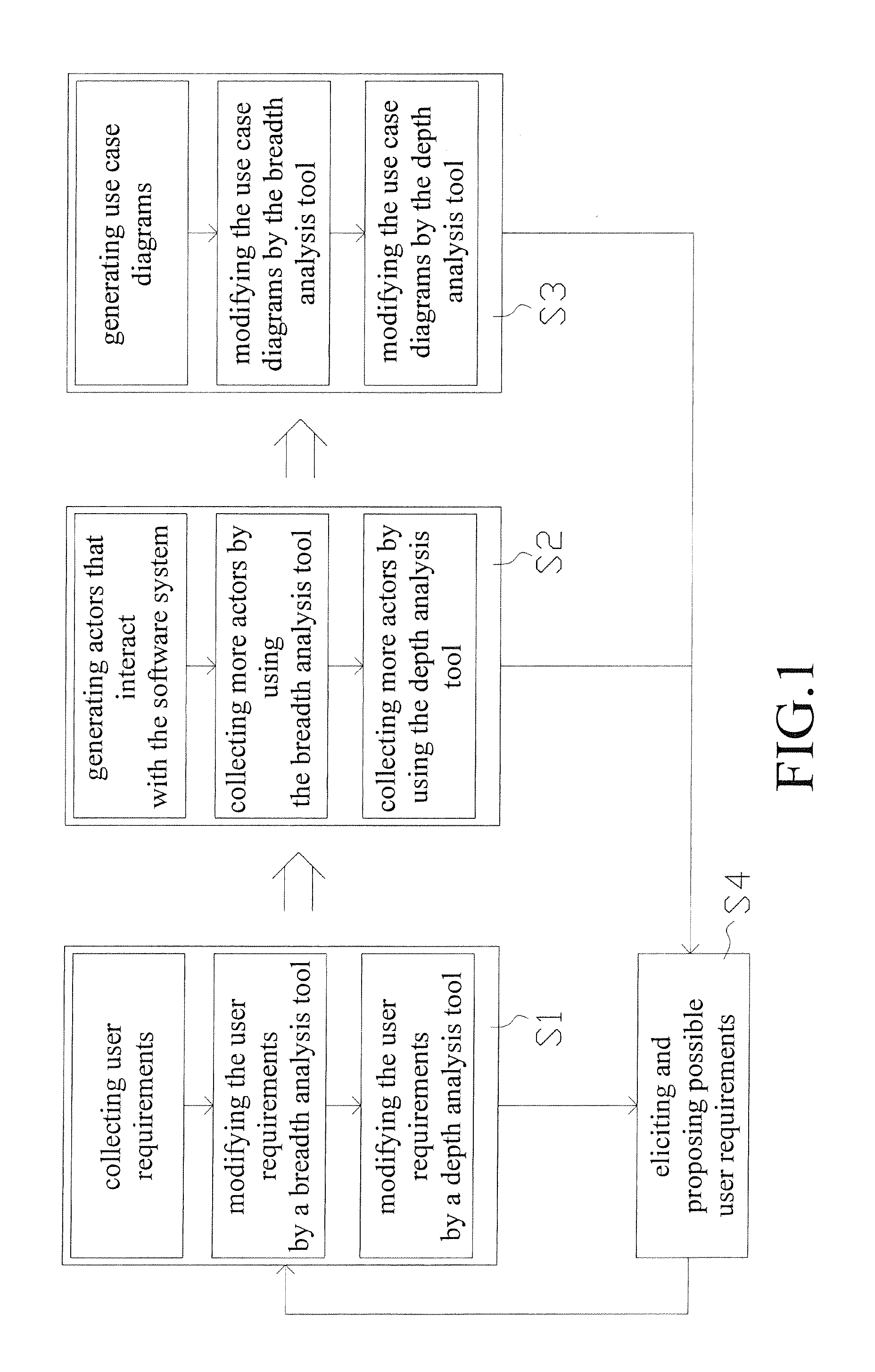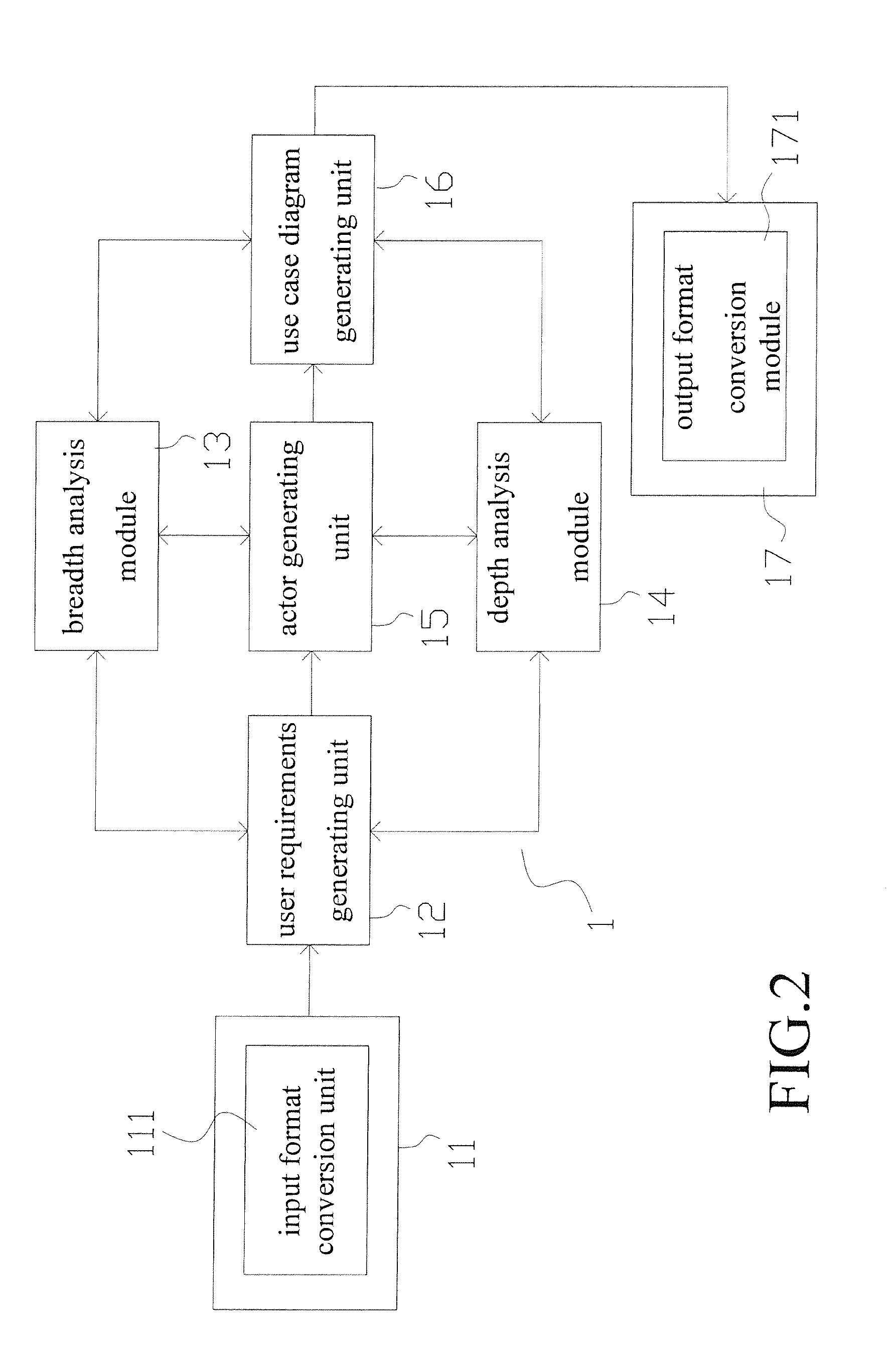Highly extensible requirement analysis method and system of the same
a requirements analysis and extensible technology, applied in the field of high extensible requirements analysis methods and systems, can solve problems such as system developers' errors in understanding the requirements of documents and diagrams, incomplete requirements descriptions, and certain errors between the document/diagram produced and user requirements, so as to improve software development efficiency and reduce development costs , the effect of rapid changes of user requirements
- Summary
- Abstract
- Description
- Claims
- Application Information
AI Technical Summary
Benefits of technology
Problems solved by technology
Method used
Image
Examples
Embodiment Construction
[0017]Refer to FIG. 1, a highly extensible requirements analysis method of the present invention includes following steps.
[0018]Step one (S1): Collect user requirements of a software system to be set up and modify the user requirements by a breadth analysis tool and a depth analysis tool in turn so that the user requirements are with breadth and depth. The breadth analysis tool is based on a PMI (Plus, Minus, and Interesting) method. PMI is thinking strategy used in de Bono's CoRT thinking program. PMI help analysts to see positive, negative and interesting sides of a strategy to eliminate the immediate acceptance or rejection of the strategy. It also makes the analyst to view things from different points of view. The in-depth analysis tool is based on APC approach. APC stands for: Alternatives, Possibilities, and Choices. The APC is a process trying to find alternatives beyond the obvious options. For example, if there are two options. The obvious choices are not always the best ch...
PUM
 Login to View More
Login to View More Abstract
Description
Claims
Application Information
 Login to View More
Login to View More - R&D
- Intellectual Property
- Life Sciences
- Materials
- Tech Scout
- Unparalleled Data Quality
- Higher Quality Content
- 60% Fewer Hallucinations
Browse by: Latest US Patents, China's latest patents, Technical Efficacy Thesaurus, Application Domain, Technology Topic, Popular Technical Reports.
© 2025 PatSnap. All rights reserved.Legal|Privacy policy|Modern Slavery Act Transparency Statement|Sitemap|About US| Contact US: help@patsnap.com



